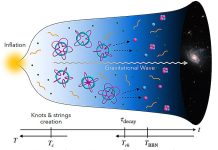
NASA engineers have successfully revived a set of thrusters on the Voyager 1 spacecraft that had been inactive since 2004.
This remarkable achievement was crucial for extending the life of the iconic spacecraft, which has been journeying through interstellar space since its launch in 1977.
The primary thrusters, which have been in use for years, are now showing signs of clogging due to a buildup of residue in their fuel tubes.
NASA’s Jet Propulsion Laboratory (JPL) team wanted to bring the long-dormant backup thrusters back online before May 4, 2025, when a critical Earth-based antenna will go offline for upgrades.
Voyager 1 and its twin, Voyager 2, are currently traveling at an astonishing speed of 35,000 mph (56,000 kph). Both spacecraft rely on thrusters to make gentle adjustments to keep their antennas pointed toward Earth.
This precise alignment is essential for sending back data and receiving commands. Voyager 1’s primary roll thrusters stopped working in 2004 after two small internal heaters lost power.
Engineers believed the heaters were beyond repair and switched to the backup thrusters, assuming they would be enough to keep the spacecraft operational.
However, with the backup thrusters now showing signs of clogging, the mission team decided to take a closer look at the original problem.
They suspected that a disturbance in the power circuits for the heaters might have caused the system to switch off unexpectedly.
If the engineers could reverse that switch, they believed the heaters—and the thrusters—might work again. This solution was risky, as firing the thrusters with inactive heaters could trigger a small explosion.
The timing of this repair was critical. From May 4, 2025, to February 2026, Deep Space Station 43 (DSS-43) in Canberra, Australia, the only Earth-based antenna powerful enough to send commands to the Voyagers, would be offline for upgrades.
The antenna is part of NASA’s Deep Space Network and is crucial for deep space communication. Although there are other antennas in California and Madrid, DSS-43 is the only one that can reach Voyager 1’s distant location. The team needed to get the backup thrusters working again before the antenna went offline, with a narrow window of operation in August and December for communication.
On March 20, the JPL team sent commands to Voyager 1, a signal that took more than 23 hours to reach the spacecraft.
When the team saw the temperature of the thruster heaters rise dramatically, they knew they had succeeded. The backup thrusters, which had been considered unusable for two decades, were alive again.
Todd Barber, the mission’s propulsion lead at JPL, described the moment as “glorious,” recalling how the entire team was overjoyed. “These thrusters were considered dead. And that was a legitimate conclusion,” Barber said. “It’s just that one of our engineers had this insight that maybe there was this other possible cause and it was fixable. It was yet another miracle save for Voyager.”
This successful revival of Voyager 1’s backup thrusters not only ensures the spacecraft can continue its mission but also highlights the ingenuity and determination of NASA’s engineering team, who managed to solve a decades-old problem nearly 15 billion miles from Earth.
Source: NASA.



